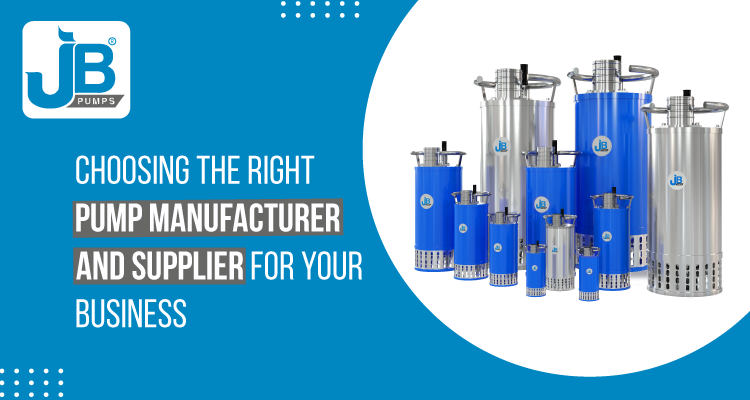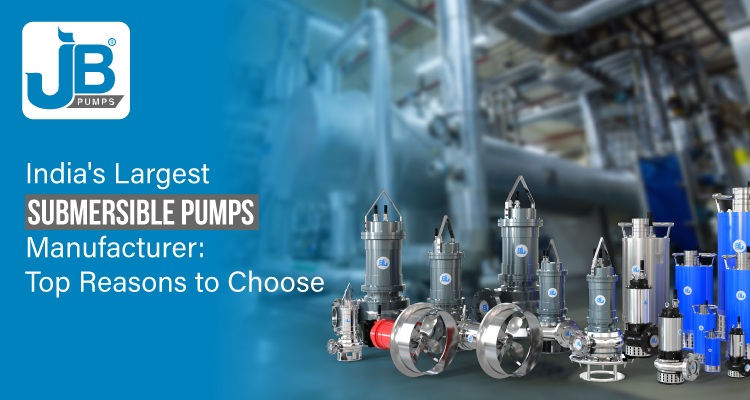
Introduction
Submersible sludge pumps are designed for pumping thick mud and other viscous liquids and solids mixtures. These pumps mainly operate by being submerged in liquid.
An ideal submersible sludge pump can easily handle and move thick liquid containing high solid content. However, picking the wrong submersible sludge pump can make the whole pumping process inefficient and costly.
Wrong submersible sludge pumps can block the pump impellers and valves, break mechanical seals, and damage the pump motor and components, leading to poor pump performance.
To prevent your application from suffering the same problems, here are the main factors to consider while selecting submersible sludge pumps for your applications.
Before we dive into the key considerations, let’s understand the basics.
What Is Sludge?
Sludge is a viscous mixture of fluids and solids produced from a range of industrial processes, such as wastewater treatment plants. It often includes organic and inorganic components that require powerful pumps to handle and transfer.
Moreover, there are two types of sludge, settling and non-settling sludge. Settling sludge consists of coarse particles, whereas non-settling sludge consists of fine particles.
The type of sludge also affects the pump selection; hence, make sure to consider points like how fast the sludge settles, sludge thickness, abrasive nature, and amount of solids in the sludge.

What Is a Submersible Sludge Pump?
Submersible sludge pumps are designed to move viscous, sludgy materials while being fully submerged in the liquid. The pump is engineered precisely to withstand the abrasive nature of sludge to avoid the pump components. .
Usually, sludge contains larger solids that can lead to pump clogging; however, with a submersible sludge pump, it won’t be an issue. Equipped with a high-capacity motor, submersible sludge pumps can efficiently handle viscous and abrasive sludge without causing clogging.
Features Of Submersible Sludge Pumps
- Non-Clogging Design
- Low Power Consumption
- Low Operation Noise
- High Performance
- High Capacity Motor
- Compact & Robust Design
- Self-Priming
- Easy To Install
- Occupy Less Space
Applications Of Submersible Sludge Pump
- Construction
- Wastewater Treatment
- Agriculture
- Drainage Systems
- Dredging
- Deep Wells
- Sand Recovery
- Sewage Treatment
- Mining Operations
Technical Specification Of Submersible Sludge Pumps
| Motor | Four Pole Continuous Duty Squirrel Cage Submersible Type Induction Motor |
| Protection | F |
| Insulation Class | IP – 68 / Thermal Over Load / Moisture |
| Cable | PVC Insulated Double Sheathed Copper Conductor Flexible |
| Range | 2 HP to 100 HP |
| RPM | 1450 |
| Size | 2 inch to 8 inch |
| Connection | DoL or Star Delta |
Submersible Sludge Pump’s Material Of Construction
| Motor Body | C.I./Alu.Alloy/SS |
| Pump Casing | C.I/Alu/S.S 304/S.S 316 |
| Impeller | CI , Aluminium, S.S 304 , S.S 316 |
| Shaft | S.S 410 / S.S 431 |
| Mech. Seal | Double Type: TC vs TC(Pump Side)/SIC vs SIC |
| Bearing | Deep Groove Ball Bearing (SKP) (Top) Double Row Angular Contact (Bottom) |
How To Select The Best Sludge Pump?
1. Sludge Properties
Identify what type of sludge you want a submersible sludge pump. Determine the sludge viscous level, temperature, vapor pressure, solids concentration, and if it’s abrasive or non-abrasive.
2. Flow Rate And Pressure
Pump flow rate and pressure show the total volume of liquid it can transfer in a specific time. Identify your requirements and choose a sludge pump with the desired flow rate and pressure.
3. Construction Material
Check if the submersible sludge pump materials of construction are compatible with the viscous liquids. Choosing the right material will help prevent damage caused to pump components due to abrasion and corrosion.
4. Pump Environment
Considering the pump environment is equally important. If the pump working environment is hazardous, then special motor features will be needed for optimum performance and safety.
5. Discharge Height
Submersible sludge pumps are used for pumping viscous liquid from lower to higher locations. Hence, it is important to determine if the pump can move the liquid to the desired height or not.
If your application doesn’t require the liquid to pump at a higher height, then a low discharge height can be ideal; however, if you want the liquid to be pumped from a deep location to a higher place, then a higher discharge height is essential
6. Power Requirements
Determine the power requirement and check if the pump you are selecting has an efficient motor to pump the liquid. Moreover, it is crucial to choose a sludge pump that is energy-efficient to minimize power consumption.
7. Discharge Rate
The discharge rate defines the amount of liquid the submersible sludge pump can transfer per hour or minute. As per the application, choose the pump with the desired discharge rate.
Conclusion
From fluid characteristics to energy efficiency, each factor of the submersible sludge pump plays a crucial role in smooth and efficient operation. We hope the above factors educate you with the knowledge to select the right submersible sludge pump for your application.
In case you aren’t sure or have doubts related to sludge pumps, we are here to help.
JB Pumps India Pvt. Ltd. is a reliable and trustworthy submersible sludge pump manufacturer in India. We offer a comprehensive range of submersible pumps that ensure the best performance in the most challenging environments.
To discuss your requirements or doubts, contact our experts today.



